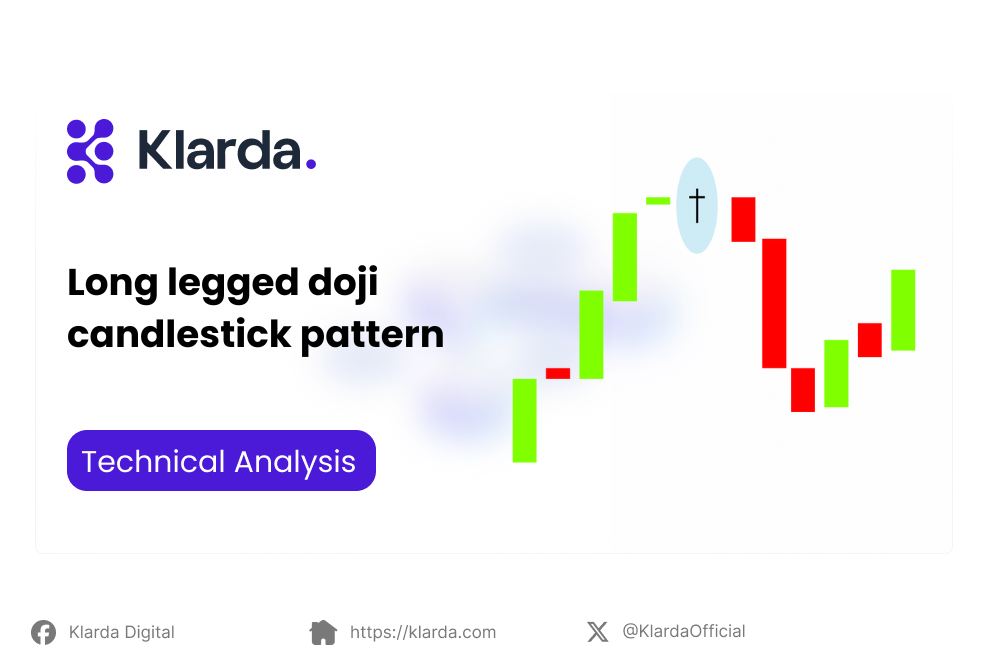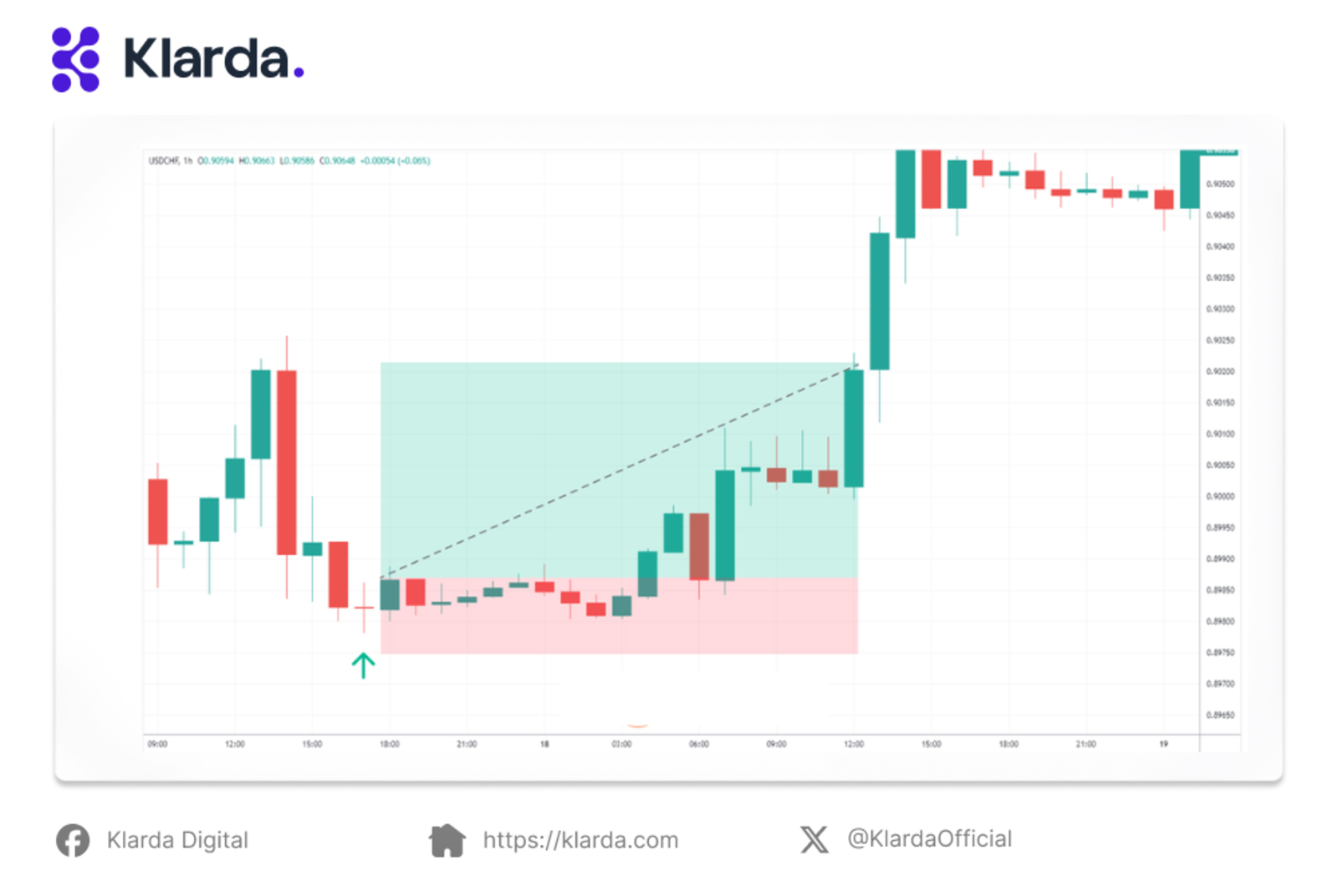Long-Legged Doji Pattern
Explore the Long Legged Doji candlestick pattern: a key signal for potential market reversals and indecision with distinctive features.
Traders in financial markets are frequently drawn to the long-legged Doji, a candlestick pattern notable for its unique shape and placement on charts. This article will delve into the long-legged Doji, highlighting its significance in trading and providing insights on how traders can incorporate it into their strategies.

KEY TAKEAWAYS
- The long-legged Doji is a candlestick with long upper and lower shadows and nearly equal opening and closing prices, signaling market indecision.
- It is more significant after a strong trend but doesn’t always indicate a trend reversal.
- It could mark the start of a consolidation period or be a minor fluctuation.
WHAT IS THE LONG_LEGGED DOJI CANDLESTICK PATTERN?

What is the long legged Doji candlestick pattern
The Long-Legged Doji is a candlestick pattern used in technical analysis to identify potential market reversals. It is characterized by a small real body, which is nearly the same as the opening and closing prices, and long upper and lower shadows. This pattern indicates significant price movement during the period but reflects indecision and a lack of clear direction.
HOW TO IDENTIFY A LONG-LEGGED DOJI
When analyzing a Long Legged Doji in technical analysis, look for these features:
- Small Real Body: The Long Legged Doji is characterized by a real body that is very small, with the opening and closing prices being nearly identical. This small body is a central feature of the pattern, regardless of the candle's color.
- Extended Upper and Lower Shadows: The pattern includes long upper and lower shadows, which extend well beyond the body of the candlestick. These shadows are typically of equal or nearly equal length, indicating substantial price movement above and below the opening and closing prices.
- Minimal Real Body Relative to Shadows: Compared to the length of the shadows, the real body of the Long Legged Doji is minimal to nonexistent. This proportion emphasizes the indecision in the market, as the price has fluctuated significantly within the period but closed near the opening price.
Key trading insights for the Long Legged Doji include:
- If the Long Legged Doji appears at the end of a downtrend, it might suggest a possible reversal or the end of selling pressure.
- When found at the peak of an uptrend, it could signal a potential reversal in the upward movement. Two Long Legged Dojis at resistance or support levels can further confirm a trend reversal.
- Within a strong trend, the appearance of a Long Legged Doji might indicate a period of short-term consolidation.
USING THE LONG_LEGGED DOJI CANDLESTICK PATTERN IN TRADING

The long legged Doji candlestick pattern in trading
Trading the Long Legged Doji involves evaluating its implications in conjunction with other technical analysis tools.
Here’s a step-by-step approach traders might follow:
- Identify the Setup: Look for a candlestick with a small real body and long upper and lower shadows.
- Analyze the Market Context: Assess the prevailing trend before the doji appears. If it follows a strong uptrend, it might signal a potential bullish reversal. Conversely, if it appears after a significant downtrend, it could indicate a possible bearish reversal. In the context of a stable trend, it might suggest a continuation of the trend.
- Set Entry and Exit Levels: Consider entering a trade when the market price surpasses the high or low of the Long Legged Doji, based on the anticipated direction. Place your stop-loss order below the low of the candle for a bullish scenario or above the high for a bearish scenario. Set your take-profit target using a risk-reward ratio or by identifying key support or resistance levels.
PROS AND CONS OF THE LONG_LEGGED DOJI CANDLESTICK PATTERN
The Long-Legged Doji is a technical analysis tool used to identify potential price trend reversals. It features a small body, often a line or dot, with long upper and lower shadows.
Pros:
- Potential Reversal Signal: After an uptrend, it can indicate a potential downward reversal, and after a downtrend, it can signal a potential upward reversal.
- Indecision and Uncertainty: The long shadows reflect indecision among traders, suggesting a possible shift in market sentiment.
- Confirmation with Other Indicators: It can be combined with other technical indicators like moving averages or support and resistance levels to reinforce the reversal signal.
Cons:
- False Signals: It may produce false signals, especially in a sideways market or within a larger trend.
- Lack of Specificity: The pattern doesn’t indicate the extent or timing of a potential reversal.
- Subjectivity in Interpretation: Traders might interpret the length of shadows and size of the body differently.
CONCLUSION
In conclusion, the Long-Legged Doji is a useful technical analysis tool for spotting potential reversals in price trends. Its small body and long shadows signal market indecision, indicating possible shifts after significant uptrends or downtrends.
However, it can produce false signals, especially in a sideways market, and lacks specifics on the magnitude or timing of reversals. Combining it with other indicators can enhance its effectiveness.
For beginners, mastering these patterns can be challenging, so consider using the Klarda app. It provides a convenient way to monitor the market anytime, anywhere, from your phone or web.
Updated 7 months ago